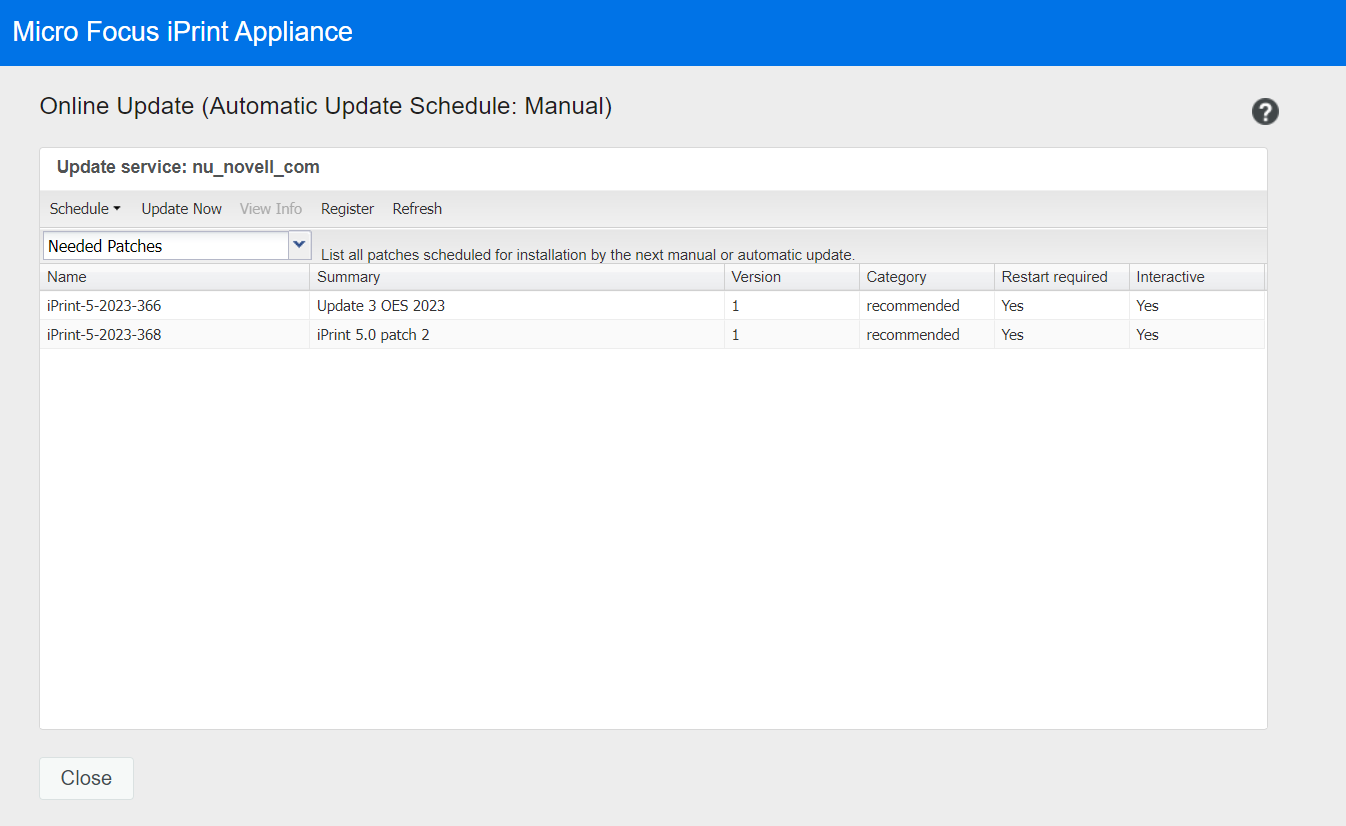10.10 Online Update
You can set a manual or automatic method to update the appliance.
NOTE:It is recommended to take the snapshot of the current configuration so that you can revert the snapshot incase of error.
Online Update (Automatic Update Schedule: X) This title show which Schedule option is selected (represented by X).
Register Online Update Service: This dialog appears whenever the appliance is not registered with an update service. For example, the first time Online Update icon is clicked or when a service has been de-registered.
The appliance must be registered to receive online updates:
Service Type: Select the service type that the appliance will use to obtain online updates: a local Subscription Management Tool (SMT) or the MicroFocus Customer Center.
OpenText Customer Center
-
Email: Your email address for registering the appliance to receive updates.
-
Activation Key: This displays in your NCC Portal in the same dialog as your product license.
-
Allow Data send: Select from the following options if you want to share information with the OpenText Customer Center:
-
Hardware Profile: Shares the hardware information.
-
Optional Information: Shares information such as host type, productversion, release, architecture, timezone, and processor.
-
Local SMT: This is a server from where you can download the software updates and automatically install them to update the product.
-
Hostname: The hostname of the server from where you want the appliance to download software updates.
-
SSL cert URL (optional): The path to the SSL certificate for encrypting communications with the server.
-
Namespace path (optional): To enable the client to use the staging group, specify a value. Do not specify any value if you want to use the default production repositories.
Update service: X After you register the appliance for an update service, the service name appears in this field (represented by X).
Patches drop-down:
-
Needed Patches: Selecting this option lists that patches that will be installed during the next manual or automatic update.
If there have been any library changes in iPrint, SLES, OES (dependent library), eDir, and CAF patches, this list displays those patches. A sample list is shown in Figure 10-1.
Figure 10-1 Needed Patches List

-
Installed Patches: Selecting this option lists all patches that have been previously installed.
Schedule drop-down: Click this to set a schedule for when the appliance will download updates.
-
If you select Manual, the appliance immediately downloads all available patches.
-
If you select Daily, Weekly, or Monthly, you must then choose to apply either All Needed Patches or Security Patches Only.
-
For interactive patches, you must select the Automatically agree with all license agreements and Automatically install all interactive patches options.
Update Now tab: This is selectable only when the Patches drop-down is set to Needed Patches.
-
After clicking the option, you must choose to apply either All Needed Patches or Security Patches Only.
-
For interactive patches, you must select the Automatically agree with all license agreements and Automatically install all interactive patches options.
View Info tab: Clicking this displays information such as a brief summary of the patch and the bug fixes in the patch.
Register tab:
-
Clicking this displays the appliance’s registration status, and an option to Deregister the appliance.
-
If you deregister the appliance, the installed patches are no longer available in the Online Update page. You need to register again to the receive the updates.
Refresh tab: Clicking this refreshes the status of updates on the Appliance.
NOTE:You need to re-register the iPrint Appliance if you get a warning stating, “One of the installed patches affects the package manager itself...".